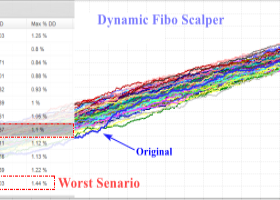3 Reasons to be Bearish Euro – Nomura
Bilal Hafeez, Research Analyst at Nomura, suggests that recently, the
euro saw an intra-day high of 1.1616 – while not quite as high as the
1.1714 high seen in August last year when equity markets plunged, it has
nevertheless challenged our bearish euro view.
Key Quotes
“Despite this spike, we maintain a bearish view on the euro. We would add three more euro bearish factors:
1) When risk appetite improves the euro will head down.
The euro has clearly become a risk-off or safe-haven currency. The
correlation between European stocks and the euro is heavily negative. A
likely explanation is that when stocks sell off, euro-area investors
hold off from investing abroad. Recent poor US data, the USD/JPY
collapse and low market liquidity owing to public holidays in the UK and
Japan have contributed to risk aversion over the past week. But these
are likely to be transitory factors – strong US jobless claims data
point to healthy payrolls later this week, the yen is unlikely to see as
sharp gains with the BOJ meeting behind us and market liquidity is
starting to normalise.
2) The euro is too high compared with real rate spreads.
At the very least this limits euro upside, but more likely could pull
euro lower. This is especially true with expectations for the next Fed
hike being pushed well into 2017, and so the risk switching to an
earlier Fed hike than that priced. Meanwhile, though Q1 growth was
strong in the euro area, inflation recently edged lower to -0.2%
(headline) and 0.7% (core), so keeps the ECB dovish.
3) The euro will likely struggle when the ECB’s balance sheet expands further on tLTRO in June (and QE).
There is much uncertainty on the likely take-up, which suggests the
market has not priced the event, but it is clear that the balance sheet
will expand. In the past, when the ECB balance sheet has expanded faster
than the Fed’s, the euro has been weak.”
![]()



